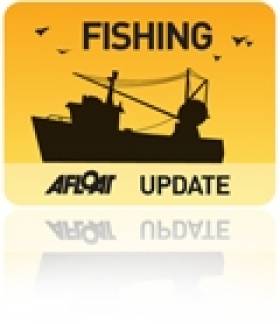Displaying items by tag: Wicklow Lifeboat
Mary Aldridge is New Lifeboat Operations Manager at Wicklow RNLI
Wicklow RNLI lifeboat Station is pleased to announce that Mary Aldridge has taken on the volunteer role of Lifeboat Operations Manager (LOM) following the recent retirement of Des Davitt.
As Lifeboat Operations Manager Mary will now be responsible for managing all operational activities at the RNLI station, as well as authorising the launch of the lifeboats.
Mary Aldridge joined Wicklow lifeboat Station as a volunteer Deputy Launching Authority four years ago. With a keen interest in aquatic sports and surf lifesaving, Mary was always interested in volunteering with the Lifeboat over the years.
As a member of An Garda Siochana for over 30 years, Mary was transferred to Wicklow from Dublin in 2007, and was the Inspector in Wicklow District until she retired in 2014.
During that time, as part of her garda role and responsibilities, she worked as Liaison Inspector for County Wicklow for Major Emergency Management. It was in this capacity that she got to know many of the crew at Wicklow Lifeboat Station and the other Emergency “Blue Light” Services.
Mary also has International experience as she served with the United Nations Civilian Police with the United Nations in Former Yugoslavia (UNPROFOR) for 12 months during the Balkan conflict in 1993/1994.
Mary is living in Wicklow for the past 20 years and is an avid sea swimmer. She regularly competes in Open Water competitions in the Leinster Open Sea Series and with Wicklow SC. She is a former Secretary and Vice Chairperson of Wicklow Swimming Club.
Speaking about her new volunteer appointment, Mary said: “I am really looking forward to my new role as Lifeboat Operations Manager at Wicklow Lifeboat Station. I have big shoes to fill in replacing Des Davitt. I wish Des and Angela all the best and an enjoyable retirement.
‘Angelus’ Trawler Also Appears On Pierside Gallery
Apart from the mural of the trawler (click HERE) there are a wide variety of vessels represented from general cargo-ships and the inclusion of STV Asgard II and the World's last ocean-going paddle-steamer P.S. Waverley. These vessels have too berthed alongside the adorned eastern breakwater where spectators flock to see the start of the biennial Round Ireland Yacht Race which was held last year.
The photo of the trawler was taken on a previous call at the Packet Quay, Wicklow and not Arklow as stated. The Packet Pier is the most used commercial quay in the Co. Wicklow port, where timber and scrap-metal cargoes are relatively common. For example the Arklow Rebel which loaded scrap-metal bound for Liverpool, to read more click HERE.






























































